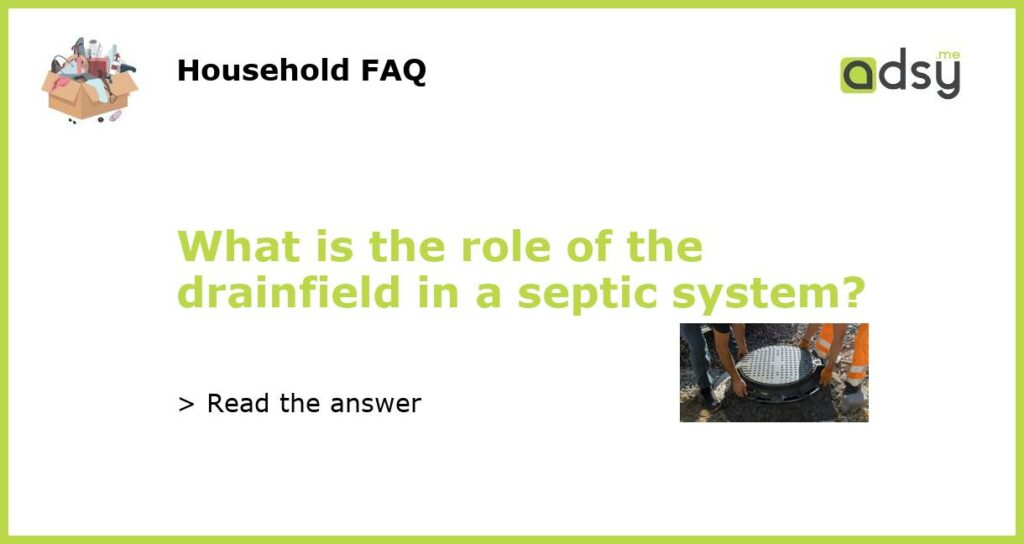The Role of the Drainfield in a Septic System
A septic system is a crucial part of any household that is not connected to a city sewer line. It is responsible for treating and disposing of the wastewater generated by the household. One of the key components of a septic system is the drainfield, which plays a vital role in the overall functioning and efficiency of the system.
What is a Drainfield?
A drainfield, also known as a leach field or absorption field, is a designated area on your property where the wastewater from your septic tank is distributed and allowed to percolate into the soil. It consists of a network of perforated pipes or chambers buried underground, typically surrounded by gravel or sand for better absorption.
How Does the Drainfield Work?
Once the wastewater leaves the septic tank, it flows into the drainfield through the distribution system. The drains connected to the septic tank release the effluent evenly across the drainfield. The wastewater then penetrates through the holes or perforations in the pipes or chambers and is dispersed into the surrounding soil.
The soil acts as a natural filter, removing harmful bacteria, viruses, and other contaminants from the effluent as it passes through. The drainfield provides the necessary conditions for bacteria to thrive and complete the final stage of treatment, breaking down organic matter and decreasing the pollutant levels in the water.
The Importance of a Well-Functioning Drainfield
A well-functioning drainfield is essential for the efficient operation of a septic system. If the drainfield fails or becomes clogged, it can lead to several issues, including:
1. Poor Wastewater Treatment: The drainfield plays a vital role in treating the wastewater from your septic tank. If it fails, the effluent may not be adequately treated, which can result in groundwater contamination and pose a threat to public health and the environment.
2. Sewage Backup: A clogged or malfunctioning drainfield can cause the septic tank to fill up quickly and eventually lead to sewage backups in your home or yard. This can be messy, costly, and time-consuming to fix.
3. Foul Odors: A failing drainfield can release foul odors into your yard or home. The presence of odors is not only unpleasant but may also indicate a problem with your septic system that needs to be addressed.
4. Expensive Repairs: Repairing or replacing a drainfield can be a costly endeavor. Regular maintenance and proper usage of your septic system can help prevent the need for major repairs or replacements.
Maintaining Your Drainfield
To ensure the optimal functioning of your drainfield and extend its lifespan, it is important to follow these maintenance guidelines:
1. Avoid Overloading: Be mindful of the amount of water you use and avoid excessive water usage, especially during a short period. Excessive water can overwhelm the drainfield, leading to saturation and reduced treatment efficiency.
2. Avoid Soil Compaction: Do not park vehicles or heavy machinery on the drainfield area, as it can compact the soil and disrupt the absorption process.
3. Regular Pumping: Have your septic tank pumped regularly to prevent solids from entering the drainfield and clogging the pipes or chambers.
4. Proper Waste Disposal: Avoid disposing of harmful substances, such as grease, oil, chemicals, medications, and non-biodegradable materials, into your septic system. These can disrupt the treatment process and harm the drainfield.
5. Regular Inspections: Schedule regular inspections of your septic system to catch any potential issues before they become major problems. A professional inspection can help identify early signs of drainfield failure and allow for timely repairs or maintenance.
By understanding the role of the drainfield in a septic system and following proper maintenance practices, you can ensure the longevity and efficiency of your septic system, and minimize the risk of costly repairs or environmental hazards.

